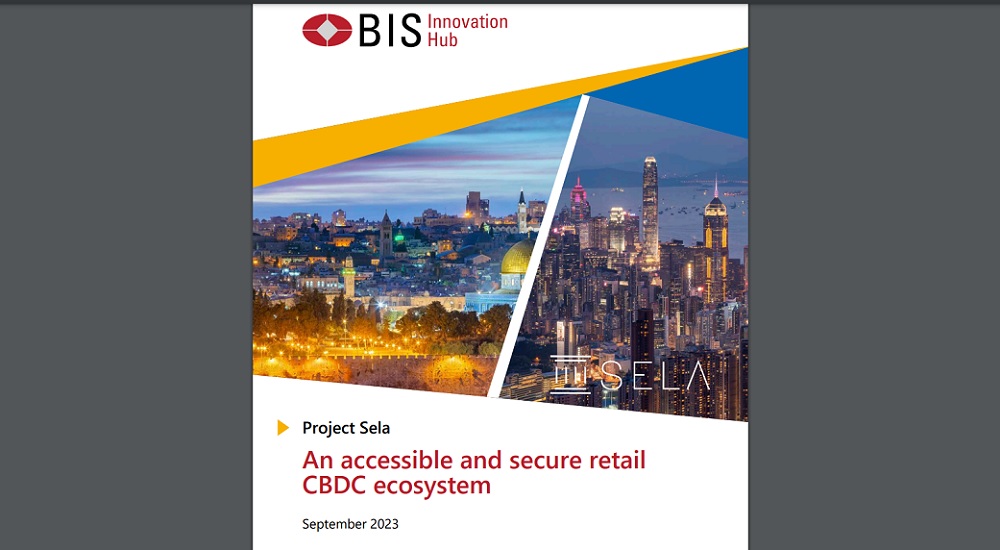
Project Sela, a joint experiment by the Bank for International Settlements (BIS) and the central banks of Hong Kong SAR and Israel, has proven the feasibility of a retail central bank digital currency (rCBDC) ecosystem that combines accessibility, competition and preventative cyber security, while retaining key advantages of physical cash.
Central bank money forms the core of the global monetary system, providing a foundation of safety, neutrality, accessibility and integrity underpinned by the payment finality achieved via settlement on the central bank’s balance sheet. Currently, the public has access to only one form of central bank money – physical cash in the form of notes and coins. However, there is clear evidence of a decline in the use of physical means of payment as consumers shift to digital payments that are heavily reliant on private providers. As economies become increasingly digital, more and more central banks are exploring retail central bank digital currency, or rCBDC, and evaluating different designs.
Designing a functional rCBDC platform presents several challenges for central banks. The central bank can play a critical role in operating the core of the system and ensuring sound money, liquidity and overall security. As retail payment needs are diverse and constantly evolving, one way to meet this demand is through a vibrant community of intermediaries that can foster competition, innovation and access. In their explorations, central banks are therefore contemplating many alternative designs for an rCBDC system.
The questions that must be considered in these efforts include, notably, what is the most efficient division of tasks between the private and public sectors in the provision of the rCBDC platform and services? How can an rCBDC system promote access and competition, and foster innovation in payment services? Does increased access come at the cost of greater cyber security risks? And, lastly, can a well designed rCBDC system retain the desirable attributes of cash while also creating user experiences functioning as well as, or better than, today’s payment systems? These are questions that Project Sela seeks to answer.
Sela tests the feasibility of an accessible and cybersecure rCBDC proof of concept. In doing so, it assumes that competition, innovation, access and cyber security are desirable properties of an rCBDC payments platform, and that these properties can be achieved through a public-private partnership that supports a vibrant ecosystem of private sector intermediaries. For this purpose, an rCBDC architecture was chosen where the central bank operates the retail ledger and provides rCBDC accounts for end users, while private intermediaries handle all customer-facing rCBDC services and obligations.
A key policy goal of Sela was to promote an accessible, competitive and innovative rCBDC ecosystem that can serve a wide range of use cases. As such, it aimed to lower the barriers to entry for service providers and unbundle and redistribute the activities related to rCBDC accounts among public and private actors.
Another important goal was to achieve a digital means of payment which preserves desirable attributes of cash, like being free from credit risk; is widely accessible and a safe means of payment and store of value; provides instant settlement; operates at a low cost; and maintains an appropriate level of privacy for end users. In Sela, the rCBDC ledger is operated by the central bank without compromising end user privacy as personal identifiers are obfuscated. Retail payments are therefore settled directly on the central bank’s balance sheet in a privacy-preserving manner, meaning instant finality for transactions.
A novel type of intermediary, the Access Enabler, is a core part of the system. It handles all customer-facing rCBDC services without ever „holding” end users’ rCBDC at any point in the process, thus eliminating the need to hold funds to ensure liquidity or to reduce settlement risk. Moreover, the Access Enabler does not need to hold funds on its own balance sheet. This removes two significant sources of costs, complexity and risk when compared with current payment service providers.
„Project Sela explored the feasibility of a CBDC system where the central bank operates the retail ledger and a new type of intermediary, called an Access Enabler, provides broader access to the CBDC, promoting competition and innovation. It showed that this can be achieved without compromising cyber security or the privacy of end users from the central bank.” said Bénédicte Nolens, Head of the BIS Innovation Hub Hong Kong Centre.
„Project Sela provided valuable practical insights into the cyber security, technological, legal and policy aspects of a retail CBDC implementation. While the HKMA has not yet made a decision on whether and when to introduce a retail CBDC in Hong Kong, Project Sela’s outcomes will inform our on-going exploration of a possible e-HKD. We hope Project Sela will also benefit other central banks in their own evaluations of different retail CBDC architectures.” said Howard Lee, Deputy Chief Executive of the HKMA.
„Competition and innovation require a flourishing and open ecosystem with many different types of service providers. This was our initial goal in Project Sela as a proof of concept, and the project proved the feasibility of the model we had in mind. If central bank money is to go digital, cybersecurity is key, and the project provided an opportunity to discuss and study cybersecurity elements of CBDC with our partners. The Bank of Israel is honoured to collaborate with institutions that stand at the frontier of CBDC explorations.” said Andrew Abir, Deputy Governor of the Bank of Israel.
Banking 4.0 – „how was the experience for you”
„To be honest I think that Sinaia, your conference, is much better then Davos.”
Many more interesting quotes in the video below: